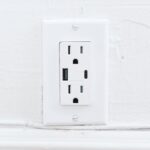Vietnam, a country rich in culture, history, and natural beauty, is an increasingly popular destination for travelers from around the globe. For US citizens planning a trip to this Southeast Asian gem, understanding the visa requirements is crucial. This guide provides essential information about Vietnam travel visas for US citizens, ensuring a smooth and hassle-free journey.
Do US Citizens Need a Visa for Vietnam?
Yes, generally, US citizens are required to have a valid visa to enter Vietnam for tourism or business purposes. While visa policies can sometimes be subject to change, as of the latest updates, pre-pandemic visa issuance policies have been reinstated by the Vietnamese government. This means that US citizens need to apply for a visa before their trip to Vietnam.
Types of Vietnam Visas for US Citizens
There are various types of Vietnam visas available to US citizens, depending on the purpose of their visit:
- Tourist Visa: This is the most common type of visa for US citizens visiting Vietnam for leisure, sightseeing, and travel. Tourist visas typically allow for single or multiple entries and are valid for a specific period, usually 30 or 90 days.
- Business Visa: US citizens traveling to Vietnam for business meetings, conferences, or work-related activities will need a business visa. Similar to tourist visas, these can be single or multiple entry.
- Other Visa Types: For purposes such as work, study, or long-term stays, other visa categories like work visas, student visas, or resident permits are required. These usually necessitate sponsorship from a Vietnamese entity or employer.
It’s important to determine the correct visa type based on your travel purpose to avoid any issues upon arrival in Vietnam.
How to Apply for a Vietnam Visa as a US Citizen
US citizens have several options to apply for a Vietnam visa:
- Vietnamese Embassy or Consulate: You can apply for a visa directly through the Embassy of Vietnam in Washington, D.C., or the Vietnamese consulates in other US cities. This traditional method involves submitting your application, passport, photos, and required documents in person or by mail. It is advisable to check the specific requirements and processing times on the embassy or consulate website.
- E-visa (Electronic Visa): The Vietnamese government offers an online e-visa system, which is a convenient option for tourist visas. US citizens can apply for an e-visa through the official website of the Vietnam Immigration Department. This process involves filling out an online application form, uploading a passport photo and a portrait photo, and paying the visa fee online. If approved, the e-visa is sent to your email, which you should print out and present upon arrival in Vietnam.
- Visa on Arrival (VOA): While less common now with the streamlined e-visa process, Visa on Arrival used to be an option, especially for tourist visas obtained through travel agencies. However, it’s crucial to verify if VOA is currently a viable and recommended option, as policies can change. E-visa is generally considered a more reliable and straightforward approach.
Recommendation: For most US citizens traveling for tourism, applying for an e-visa online is the most convenient and recommended method.
Visa Extensions and Overstays in Vietnam
It’s important to adhere to your visa validity period while in Vietnam. Overstaying your visa can lead to penalties, fines, and potential issues with future entries. If you find yourself needing to extend your stay, it is crucial to contact the Vietnamese immigration authorities directly.
Important Note: The U.S. Embassy and Consulates in Vietnam do not issue visa extension letters or sponsor visa extensions. US citizens are responsible for managing their visa status and dealing directly with Vietnamese immigration offices for any extensions or issues.
For those on work visas or sponsored visas, extensions should be processed through their sponsoring organization or employer in Vietnam, working in conjunction with immigration authorities.
COVID-19 and Vietnam Visa Policies
As of March 15, 2022, Vietnam has lifted all previous COVID-19 related entry restrictions and resumed pre-pandemic visa policies. This positive update means that travel to Vietnam is now significantly easier for US citizens. It is always wise to check for any last-minute updates or health regulations before traveling, but the general visa application process is back to normal.
Key Contacts and Resources for US Citizens
For the most up-to-date information and assistance regarding Vietnam visas, US citizens can refer to the following resources:
- Embassy of the Socialist Republic of Vietnam in the United States: https://vietnamembassy-usa.org/ – Provides information on visa applications and regulations (available in English and Vietnamese).
- Vietnamese Immigration Department: https://xuatnhapcanh.gov.vn/en – The official website for immigration information, including e-visa applications and FAQs (English version available).
- U.S. Embassy in Hanoi: https://vn.usembassy.gov/ – For general information and assistance for US citizens in Vietnam. (Contact details for Hanoi and Ho Chi Minh City Consulates are available on their website).
- Vietnam Tourism Administration (VTA): https://vietnamtourism.gov.vn/en – For general tourism information and potentially for accredited travel agencies, although direct visa assistance should be sought from immigration or embassies.
Conclusion
Navigating visa requirements might seem daunting, but for US citizens planning to visit Vietnam, the process is generally straightforward, especially with the e-visa option. By understanding the visa types, application procedures, and keeping informed through official sources, you can ensure a smooth entry into Vietnam and focus on enjoying the incredible experiences this vibrant country has to offer. Always remember to check the most current regulations and plan your visa application well in advance of your travel dates.
